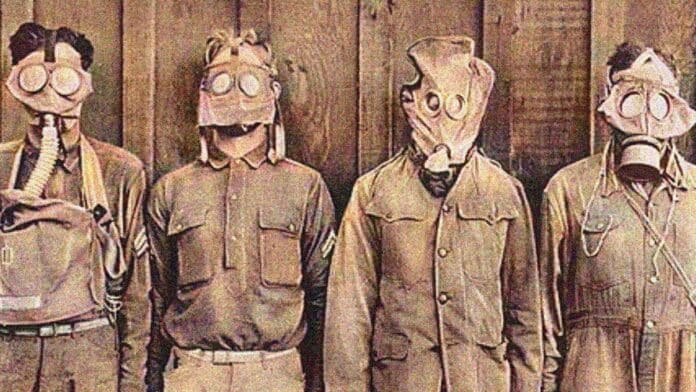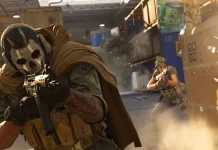
Chemical warfare is one of the most despicable forms of warfare, where toxic substances are intentionally used to harm military forces and civilian populations. In this article learn and explore the nature of chemical warfare, the Intentional Use of Toxins in Warfare, its historical context, the devastating consequences it has on victims, and the international efforts to combat its use. By examining various case studies and credible sources, we shed light on the urgent need for continued vigilance and decisive action against this insidious threat.
Contents
- 1 What is Chemical Warfare?
- 2 Historical Overview: Unearthing the Origins of Chemical Warfare
- 3 The Mechanics of Chemical Warfare: Understanding the Weapons
- 4 Humanitarian Impact: Consequences of Chemical Warfare
- 5 Case Studies: Unforgettable Encounters with Chemical Warfare
- 6 International Legal Framework: Banning Chemical Warfare
- 7 Contemporary Challenges and Emerging Threats
- 8 Conclusion
- 9 Sources
What is Chemical Warfare?
Chemical Warfare is the Intentional Use of Toxins in Warfare, which uses toxic chemicals to harm or kill counterpart military forces, civilian populations, and animals, or to destroy the environment and agriculture. These weapons are designed to release chemical agents that have toxic properties, causing severe injury, illness, or death to those exposed to them. Chemical weapons can take various forms and can be classified into several categories based on their chemical composition and effects. These chemicals are dispersed using various delivery systems, including artillery shells, rockets, or ballistic missiles. Chemical weapons are categorized as weapons of mass destruction, and their utilization during times of armed conflict constitutes a breach of international legal principles.
Types of chemical weapons:
- Nerve Agents: Nerve agents are highly toxic chemicals that disrupt the functioning of the nervous system. They block the enzyme responsible for breaking down acetylcholine, a neurotransmitter essential for the proper functioning of the nervous system. Examples of nerve agents include sarin, tabun, soman, and VX.
- Blister Agents: Blister agents, also known as vesicants, cause severe skin, eye, and respiratory damage upon contact. They are named after their ability to cause painful blisters on exposed skin. Sulfur mustard (mustard gas) and lewisite are examples of blister agents.
- Choking Agents: Choking agents, also called lung-damaging agents, cause damage to the respiratory system, leading to suffocation and severe respiratory distress. These agents damage lung tissues and can cause pulmonary edema. Chlorine gas and phosgene are examples of choking agents.
- Blood Agents: Blood agents interfere with the normal functioning of the body’s oxygen-carrying capacity, primarily by disrupting the enzyme systems involved in cellular respiration. They can lead to oxygen deprivation in the body’s tissues, resulting in organ failure. Hydrogen cyanide and cyanogen chloride are examples of blood agents.
- Riot Control Agents: Riot control agents, also known as tear gases, are chemical compounds used for crowd control and dispersal purposes. While they are generally less lethal than other chemical weapons, they can cause temporary incapacitation, eye and respiratory irritation, and intense discomfort.
Chemical weapons can have immediate and long-term effects on individuals exposed to them. The severity of the impact depends on factors such as the type and concentration of the chemical agent, duration of exposure, and the individual’s proximity to the source of release. The use of chemical weapons is widely condemned by the international community, and their development, production, stockpiling, and use are strictly prohibited under the Chemical Weapons Convention (CWC) and other international treaties and agreements.
Historical Overview: Unearthing the Origins of Chemical Warfare
Chemical warfare can trace its roots back to ancient times, with early examples of chemical weapon use documented throughout history. However, it was during World War I that chemical warfare emerged as a significant tool of destruction. Countries engaged in a race to develop and deploy toxic gases, leading to widespread suffering and loss of life. The atrocities committed during this period prompted the international community to respond, resulting in the adoption of the Geneva Protocol, which condemned the use of chemical weapons.
The Mechanics of Chemical Warfare: Understanding the Weapons
Chemical agents used in warfare can be categorized into various types, such as blister agents, nerve agents, choking agents, and blood agents. Each of these agents possesses unique properties and affects the human body differently. Delivery systems play a crucial role in dispersing these chemical agents effectively. Techniques range from aerial bombings and artillery shells to improvised devices. Protective equipment and decontamination measures are also essential for mitigating the impact on military personnel.
How are chemical weapons delivered?
Chemical weapons can be delivered through various means, depending on the specific context and purpose of their use. Here are some common methods of delivery:
- Aerial Delivery: Chemical weapons can be disseminated from aircraft, such as bombers or helicopters, to cover a large area or target specific locations. The chemicals are usually contained in bombs, missiles, or canisters attached to aircraft. Upon release, the chemical agents disperse as aerosols or droplets over the intended target area.
- Artillery Shells: Chemical agents can be loaded into artillery shells, including mortars and howitzers, and fired toward specific targets. The shells are designed to burst upon impact, releasing the chemical agent in the form of a cloud or spray over the target area.
- Rockets and Missiles: Chemical weapons can be incorporated into rockets or ballistic missiles, allowing for long-range delivery capabilities. The rockets or missiles are equipped with warheads containing chemical agents, which are released upon detonation.
- Spray Tanks and Sprayers: In some cases, chemical agents may be dispersed using specialized equipment, such as spray tanks or sprayers mounted on vehicles or handheld devices. This method allows for the controlled release of chemical agents over a specific area or targeted individuals.
- Improvised Devices: Non-state actors or terrorists may resort to improvised devices to deliver chemical agents. These devices can range from simple makeshift mechanisms, such as gas canisters or improvised explosive devices (IEDs), to more complex systems designed to release chemical agents in crowded areas or confined spaces.
It is important to note that the use of chemical weapons is strictly prohibited under international law, including the Chemical Weapons Convention (CWC). The international community, through organizations like the Organization for the Prohibition of Chemical Weapons (OPCW), works to prevent the development, production, stockpiling, and use of chemical weapons and ensure their destruction.
Which country has chemical weapons?
As of 2021, several countries have declared chemical weapons stockpiles or have been known to possess chemical weapons in the past. However, it is important to note that efforts have been made to destroy these stockpiles and eliminate chemical weapons under the framework of the Chemical Weapons Convention (CWC). Here are some countries that have been associated with chemical weapons:
- Russia: Russia is known to have possessed one of the largest stockpiles of chemical weapons. The country has been actively engaged in the process of destroying its declared stockpile, and as of September 2021, it reported that over 98% of its declared chemical weapons had been destroyed.
- United States: The United States also had a significant stockpile of chemical weapons, but it has made progress in their destruction. The U.S. has been involved in the process of eliminating its declared stockpile and has completed the destruction of the majority of its chemical weapons.
- Syria: Syria has been embroiled in a civil war since 2011, and there have been multiple reports of chemical weapons use during the conflict. The Syrian government has been accused of deploying chemical agents, such as sarin and chlorine gas, against civilian populations. The Organization for the Prohibition of Chemical Weapons (OPCW) has been involved in the disarmament process in Syria, overseeing the removal and destruction of declared chemical weapons.
- Iraq: Efforts have been made to identify and eliminate any remaining chemical weapons in Iraq.
- Libya: Libya had declared a stockpile of chemical weapons but, following the political unrest in the country, there were concerns regarding the security and control of these weapons. Efforts have been made to secure and destroy the stockpile under international supervision.
It is important to emphasize that the destruction and elimination of chemical weapons stockpiles is an ongoing process, and the information provided may have changed. The OPCW oversees the verification and destruction of declared stockpiles and works towards preventing the re-emergence or proliferation of chemical weapons.
Humanitarian Impact: Consequences of Chemical Warfare
The immediate effects of chemical warfare on individuals and communities are devastating. Exposure to chemical agents can cause severe injuries, including burns, respiratory problems, and damage to vital organs. Innocent civilians, including women and children, often bear the brunt of these attacks, leading to widespread panic, displacement, and psychological trauma. Furthermore, the long-term health implications for victims can be severe, with survivors facing chronic illnesses and disabilities. Chemical warfare also poses significant environmental and ecological threats, contaminating land, water, and the ecosystem for generations to come.
Case Studies: Unforgettable Encounters with Chemical Warfare
Examining specific instances provides a stark reminder of the horrors of chemical warfare. The Halabja massacre serves as a tragic example, where chemical attacks were employed against the Kurdish population in Iraq, resulting in the deaths of thousands. The ongoing Syrian conflict has witnessed repeated use of chemical weapons, targeting civilian areas and exacerbating the humanitarian crisis. In a separate incident, the Tokyo subway sarin attack carried out by the Aum Shinrikyo cult in 1995 demonstrated the potential for non-state actors to utilize chemical agents for terrorist purposes.
International Legal Framework: Banning Chemical Warfare
The Chemical Weapons Convention (CWC) stands as a pivotal international treaty that bans the development, production, stockpiling, and use of chemical weapons. The treaty has been ratified by the majority of nations worldwide, aiming to achieve global disarmament. The Organization for the Prohibition of Chemical Weapons (OPCW) plays a vital role in implementing and overseeing the treaty’s provisions. However, challenges and compliance issues persist, requiring ongoing efforts to ensure strict adherence to the ban on chemical weapons.
Are chemical weapons prohibited?
Yes, chemical weapons are prohibited under international law. The use, development, production, stockpiling, and transfer of chemical weapons are strictly forbidden by the Chemical Weapons Convention (CWC), which is a multilateral disarmament treaty that came into force in 1997. The CWC aims to eliminate chemical weapons and ensure their non-proliferation.
As of September 2021, the CWC has been ratified by 193 countries, making it one of the most widely supported disarmament treaties. These states, known as States Parties, are legally bound to comply with the provisions of the convention.
The CWC sets out a comprehensive framework for the prohibition and elimination of chemical weapons. Its key provisions include:
- Prohibition: The CWC prohibits the development, production, acquisition, stockpiling, and use of chemical weapons. It also prohibits any assistance, encouragement, or inducement to engage in activities prohibited by the treaty.
- Destruction: States Parties are required to destroy all their chemical weapons stockpiles, production facilities, and related equipment under international verification. They must also destroy any chemical weapons abandoned on their territory by other states.
- Verification and Monitoring: The Organization for the Prohibition of Chemical Weapons (OPCW) is the implementing body of the CWC. It is responsible for verifying compliance with the treaty’s provisions, conducting inspections, and overseeing the destruction of chemical weapons.
- Assistance and Protection: The CWC obligates States Parties to provide assistance and protection to individuals affected by chemical weapons incidents, promote cooperation in medical and scientific research, and share information on protective measures and medical treatments.
- Non-Proliferation: The CWC aims to prevent the spread of chemical weapons by prohibiting their transfer to other states and non-state actors.
The international community, through the OPCW, works to ensure compliance with the CWC and promote the universal adoption of the treaty. The OPCW conducts inspections, monitors chemical industry facilities, assists in the destruction of chemical weapons, and provides assistance to states in building capacity for chemical weapons destruction and preventing their re-emergence.
It is important to note that despite the prohibition of chemical weapons, there have been reported instances of their use, underscoring the need for continued vigilance, international cooperation, and efforts to hold perpetrators accountable.
Contemporary Challenges and Emerging Threats
The persistence of state-sponsored programs poses a significant challenge to global security. Some nations continue to maintain chemical weapons stockpiles or develop new agents, undermining disarmament efforts. Non-state actors, such as terrorist organizations, also present a threat, as witnessed in various incidents. Additionally, advances in science and technology create new possibilities for the dual-use applications of chemicals, highlighting the need for enhanced monitoring and regulation to prevent misuse.
Conclusion
Chemical warfare represents a dark chapter in human history, showcasing the depths of inhumanity reached in times of conflict. While significant strides have been made in the international community to ban and eliminate chemical weapons, continued vigilance and action are necessary to address existing challenges and emerging threats.
The devastating humanitarian impact and long-lasting consequences of chemical warfare on individuals, communities, and the environment underscore the urgency of upholding and strengthening the global prohibition regime. Nations need to work collectively to enforce disarmament obligations, enhance detection capabilities, and foster international cooperation to safeguard the future of humanity.
Despite many significant achievements, challenges persist in enforcing compliance with the CWC. Some countries still possess chemical weapons or engage in clandestine activities to develop new agents. The OPCW faces the difficult task of ensuring complete disarmament and monitoring compliance while navigating political complexities. Cooperation and transparency among member states are crucial to effectively strengthening the global prohibition regime and addressing emerging threats.
In addition to state-sponsored programs, non-state actors pose a significant concern. Terrorist organizations, driven by extremist ideologies, may seek to acquire and deploy chemical weapons to cause mass casualties and spread fear. The international community must remain vigilant in countering these threats through intelligence sharing, enhanced border controls, and robust counterterrorism measures.
Advances in science and technology also present new challenges in preventing the misuse of chemicals. Dual-use applications, where chemicals intended for legitimate purposes can be diverted for nefarious use, highlight the need for enhanced monitoring and regulation. The development of novel chemical agents or the modification of existing ones using advanced scientific techniques raises concerns about the potential for new, undetectable chemical weapons.
In conclusion, chemical warfare represents a grave threat to humanity and the principles of international law. The historical atrocities, ongoing conflicts, and emerging challenges remind us of the urgent need to strengthen disarmament efforts, enforce compliance, and enhance international cooperation. The global community must remain steadfast in its commitment to eradicating chemical weapons and safeguarding the future by ensuring that such heinous acts are never repeated.
Sources
- 1. Al-Najjar, H. A., & Ibrahim, N. A. (2019). Halabja chemical attack:
- 2. Review of the Kurdish massacre and its aftermaths. Avicenna Journal of Medicine, 9(3), 79–84.
- 2. Global Security. (n.d.). Chemical Warfare Agents. Retrieved from https://www.globalsecurity.org/wmd/intro/cw-agents.htm
- 3. The Organization for the Prohibition of Chemical Weapons (OPCW). (n.d.). Retrieved from https://www.opcw.org/
- 4. United Nations. (1997). Convention on the Prohibition of the Development, Production, Stockpiling, and Use of Chemical Weapons and Destruction. Retrieved from https://www.un.org/disarmament/wmd/chemical/
- 5. Wagner, R., & Peddicord, R. K. (Eds.). (2015). Advances in Chemical Warfare Countermeasures. CRC Press.
FACT CHECK: We strive for accuracy and fairness. But if you see something that doesn’t look right, please Contact us.
DISCLOSURE: This Article may contain affiliate links and Sponsored ads, to know more please read our Privacy Policy.
Stay Updated: Follow our WhatsApp Channel and Telegram Channel.













for a criminal elite to declare chemical weapon VOC treated petroleum distillates into a floating gel, buy houses to release it, to buy cheap, sell dear or insure and burn them down. and declare the method, grafting into bought property to release into environs to gain more land thusly, then have it be called a flu virus, Yet here we are, and Isis like group occupying said spray house network and no one the wiser. tongue in cheek hopefully, peace n out